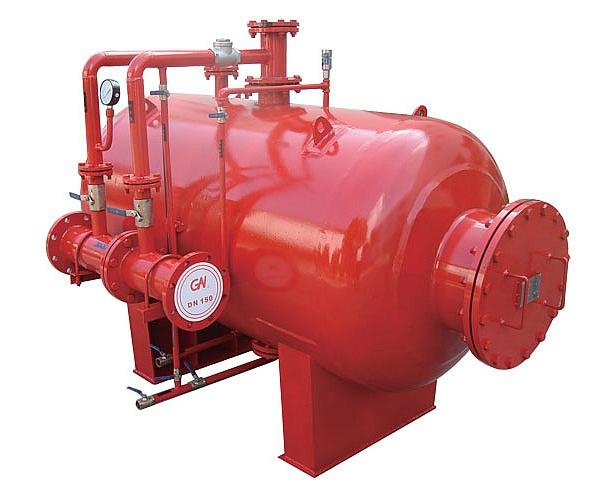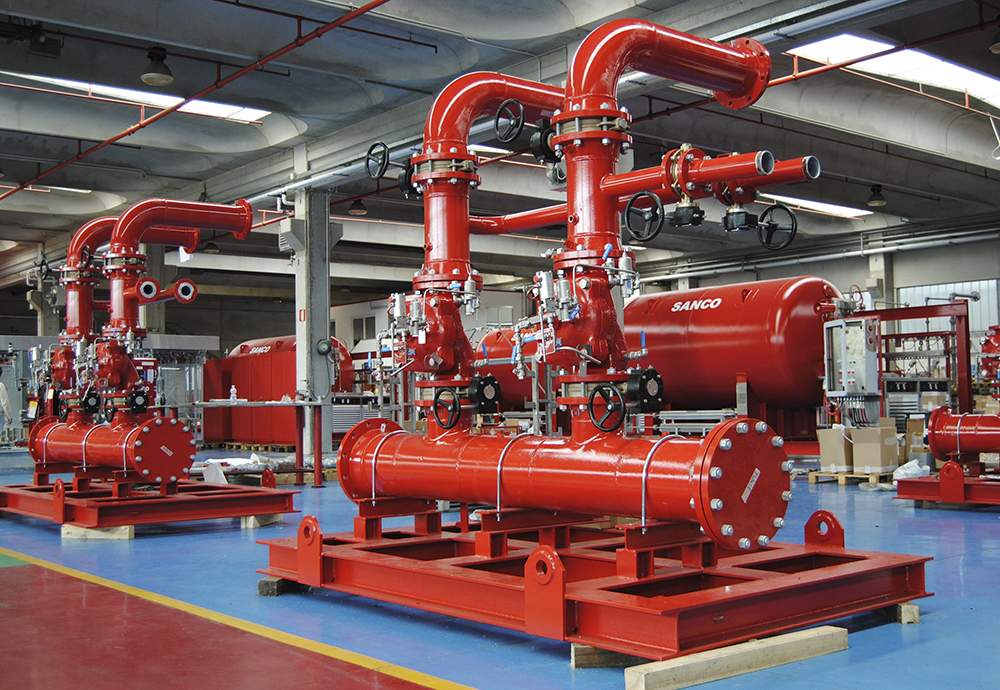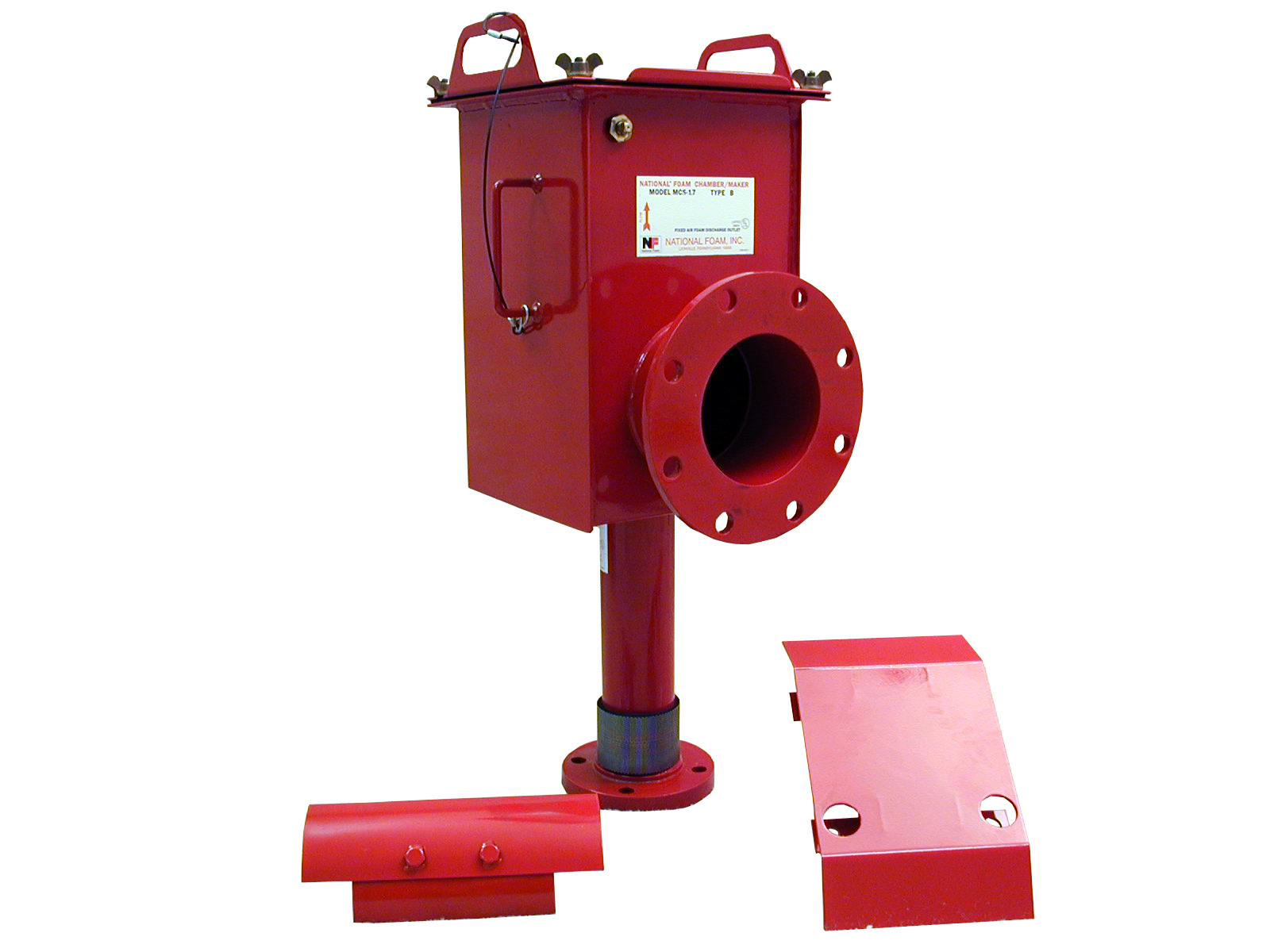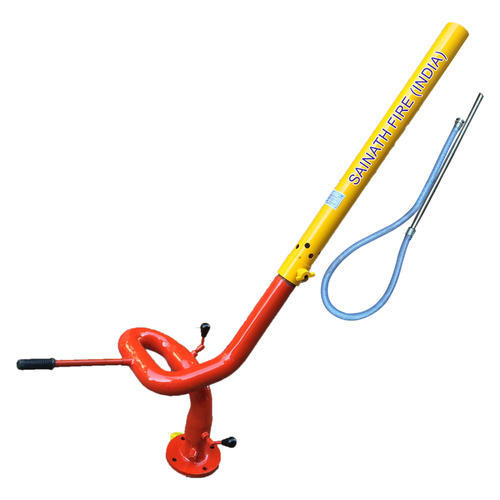Fire suppression foam is comprised of three parts: foam concentrate, water, and air. When mixed correctly, these parts form a homogeneous foam blanket that extinguishes flames by the combined mechanisms of cooling, separating the flame source from the product surface, suppressing vapors, and smothering. This makes foam suppression systems an effective option for protecting flammable and combustible liquids.
Foam systems come in two types, as follows:
Low Expansion, where the bubble expansion ratio is small (less than 20 to 1) and the bubble contains a high water content.
Medium and High Expansion, where the expansion ratios are greater from 20 to 1 up to 1,000 to 1. At these expansion ratios, the bubble water content is low and the bubble is relatively light. The foam bubbles are made by mixing a foam concentrate with water to make a foam solution. The foam solution is then mechanically agitated to form bubbles.

Low Expansion Foam Fire Extinguishing Systems are applicable to special hazards, usually involving flammable or combustible liquids, such as storage tanks. These systems discharge foam bubbles over the liquid surface to provide a cooling, smothering blanket which progressively covers the liquid surface and extinguishes the fire. The foam blanket can prevent vapor production for some time. Aqueous film-forming foam (AFFF) functions in a similar manner, but with one notable difference: AFFF is capable of producing water solution films which float on the surface of the liquid and help suppress vapor production. However, this beneficial “film” is obtained with some loss of burn-back resistance.
High Expansion foam systems are applicable to areas where it might be desirable to fill the space with foam in order to exclude air and smother the fire. Examples of such areas include basements and warehouses.
There is generally five foam fire protection systems commonly encountered:
- General area coverage with foam water monitors, hoses, or portable towers
- Fixed foam water deluge spray systems for general areas or specific equipment
- Atmospheric or low pressure storage tank protection by overhead foam chambers
- Atmospheric or low pressure storage tank protection by subsurface injection
- High expansion foam applied to special hazards such as warehouses or confined spaces
General Area Coverage
General area coverage is usually provided where there is fully or partially enclosed areas, e.g., offshore modules, truck loading racks, liquid storage warehouses, etc., where liquid spills can easily spray, spread, or drain over a large area. Where the protected areas are critical or high value, immediate detection and release mechanisms are chosen (i.e., deluge systems). Aspirating or non-aspirating nozzles may be used. Aspirating nozzles generally produce foams with a longer life span after discharge. Aspirating nozzles also produce foam with a higher expansion ration than non-aspirating nozzles.
Foam Water Deluge Systems
Deluge systems are generally used in areas requiring an immediate application of foam over a large area, such as a process area, truck loading racks, etc. The system employs nozzles connected to a pipe distribution network that are in turn connected to an automatic control valve referred to as a deluge valve. Automatic detection in the hazard area or manual activation opens the deluge valve.
Overhead Foam Injection
Overhead foam injection systems are provided for the protection of atmospheric or low pressure storage tanks. They consist of one or more foam chambers installed on the shell of a tank just below the roof joint. A foam solution pipe is extended from the proportioning source, which is located in a safe location, to a foam aspirating mechanism just upstream of the foam chamber or pourer. A deflector is usually positioned on the inside tank wall at the foam chamber. It is used to deflect the foam against the tank wall and onto the surface of the tank or the tank and the shell seal area.
Two types of designs are commonly applied. For cone top tanks or internal floating roof tanks with other than pontoon decks, multiple foam makers are mounted on the upper edge of the tank shell. These systems are designed to deliver and protect the entire surface area of the liquid of the tank. For open and covered floating roof tanks with pontoon decks, the foam system is designed to protect the seal area. Foam makers are mounted on the outside of the tank shell near the rim and foam is run down inside to the seal area that is provided with vertical barrier adjacent to the seal area i.e., a “foam dam” to hold the foam in the seal area.
Subsurface Foam Injection
Subsurface foam injection another method to protect atmospheric or low pressure storage tanks. This method produces foam through a “high back pressure foam maker” and forces it into the bottom of the storage tank. It can be applied to any of the various types of atmospheric pressure storage tanks but is generally not recommended for application to storage tanks with a floating roof since distribution of the foam to the seal area from the internal dispersion is difficult to obtain.
Deck Integrated Fire Fighting System (DIFFS)
A Deck Integrated Fire Fighting System (DIFFS) is a specialized fire protection system for utilization on the deck of a heli-pad or in a concrete floor for aircraft hangar applications that integrates the fire fighting system with structural construction of the deck surface to make a more integrated and less obstructive fire fighting system
DIFFS consist of foam mixing skids and pop-up nozzles. These are permanently installed high capacity deluge or flexi nozzles and pop-up nozzles for heli-decks or larger areas such as hangars. DIFFS can be automatically activated by a detection system or manually by release panels (push buttons). Rescue personnel can safely perform rescue operations on the heli-deck even when the system is fully activated.



